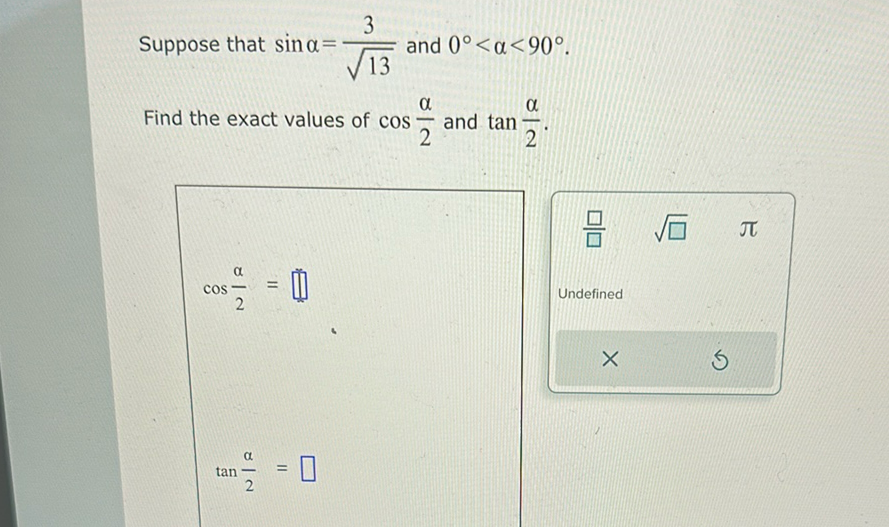Full solution
Q. Suppose that and Find the exact values of and .
- Given Information: We are given that and is in the first quadrant (0^\circ < \alpha < 90^\circ). To find and , we can use the half-angle formulas for sine and cosine. The half-angle formula for cosine is:Since is in the first quadrant, will be positive, and since we are looking for in the first or second quadrant (because will be less than ), we will choose the positive square root.First, we need to find using the Pythagorean identity:
- Find : Now we can find using the half-angle formula:
- Find : Next, we will find using the half-angle formula for tangent, which is:Since is in the first quadrant, will be positive, and we will choose the positive square root for .

